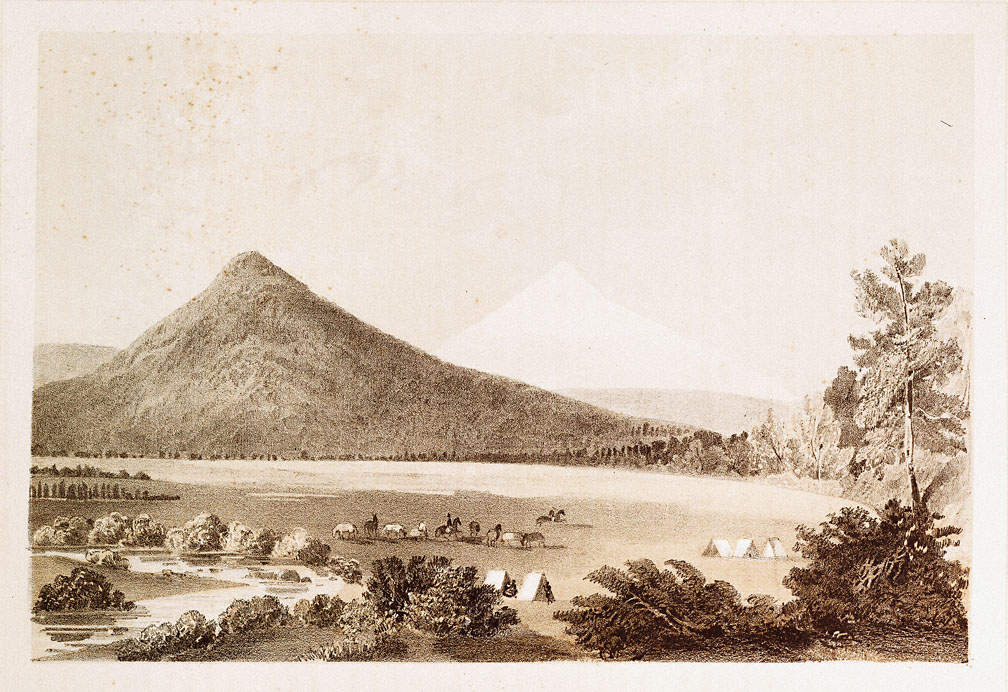- Catalog No. —
- OrHi 104904
- Date —
- 1857
- Era —
- 1846-1880 (Treaties, Civil War, and Immigration)
- Themes —
- Exploration and Explorers, Transportation and Communication
- Credits —
- Oregon Historical Society
- Regions —
- Cascades Central
- Author —
- Robert S. Young
Mount Jefferson & Black Butte
This lithograph is based on an original watercolor by Robert S. Young, the artist who accompanied the Pacific Railroad Survey of 1855 commanded by Lieutenants Robert Stockton Williamson and Henry Larcom Abbot.
The Williamson-Abbot survey of 1855 was one of several expeditions conducted by the U.S. Corps of Topographical Engineers during the 1850s at the behest of the Secretary of War, Jefferson Davis. In March 1853, Congress had directed Davis to conduct a series of surveys in order to “ascertain the most practicable and economic route for a railroad from the Mississippi River to the Pacific Ocean.” Davis charged Williamson and Abbot with the task of determining possible routes from the Sacramento Valley in California to the Columbia River in the Oregon Territory, either by way of the Willamette Valley or the Deschutes River. The two lieutenants received their orders in early May 1855; Williamson would serve as the official head of the expedition, while Abbot would hold the rank of second in command.
Having departed New York on May 4, 1855, Williamson and Abbot arrived in San Francisco on May 30. After six weeks making necessary preparations, securing pack mules, and assembling their crew, the expedition left Fort Benicia in early July 1855. In addition to eighteen civilian packers, the survey party included John S. Young; Dr. John Strong Newberry, a geologist and botanist; Dr. E. Sterling, a physician and naturalist; H.C. Fillebrown, an assistant engineer; C.D. Anderson, a computation specialist; and Charles Coleman, the pack master. Upon leaving Fort Reading in late July, a military escort comprised of some 100 officers and soldiers accompanied the expedition.
Over the next five months the survey party, broken up into several detachments, explored northern California, the Klamath Basin, Central Oregon, the Cascade Range, and the Willamette Valley. In an unexpected turn of events, Lieutenant Abbot took full command of the expedition while in Central Oregon after Lieutenant Williamson became ill and elected to return to California by sea. Abbot led the overland party back to California via the Willamette Valley, reaching Fort Reading in mid-November 1855.
Further Reading:
Abbot, Henry L. Report of Lieut. Henry L. Abbot Upon Explorations for a Railroad Route from Sacramento Valley to the Columbia River. Washington, D.C., 1857.
Written by Melinda Jette, © Oregon Historical Society, 2003.

